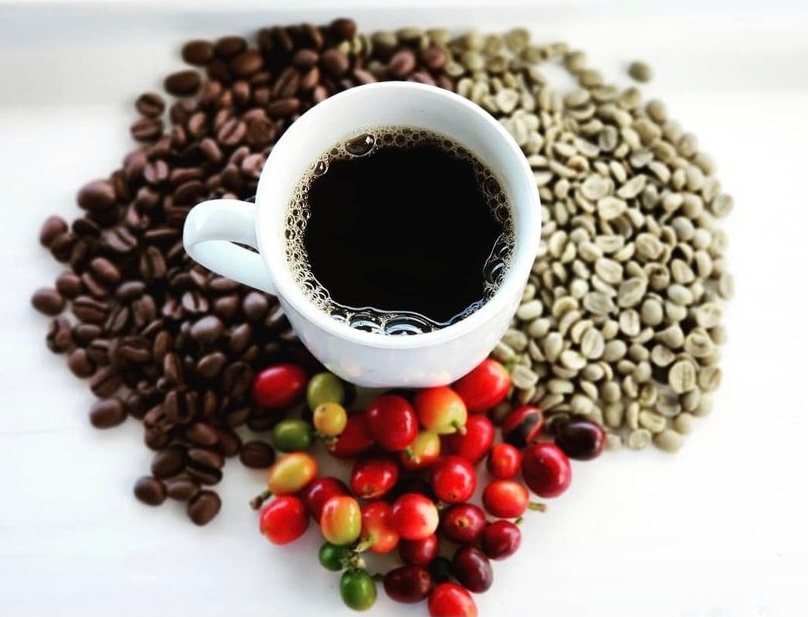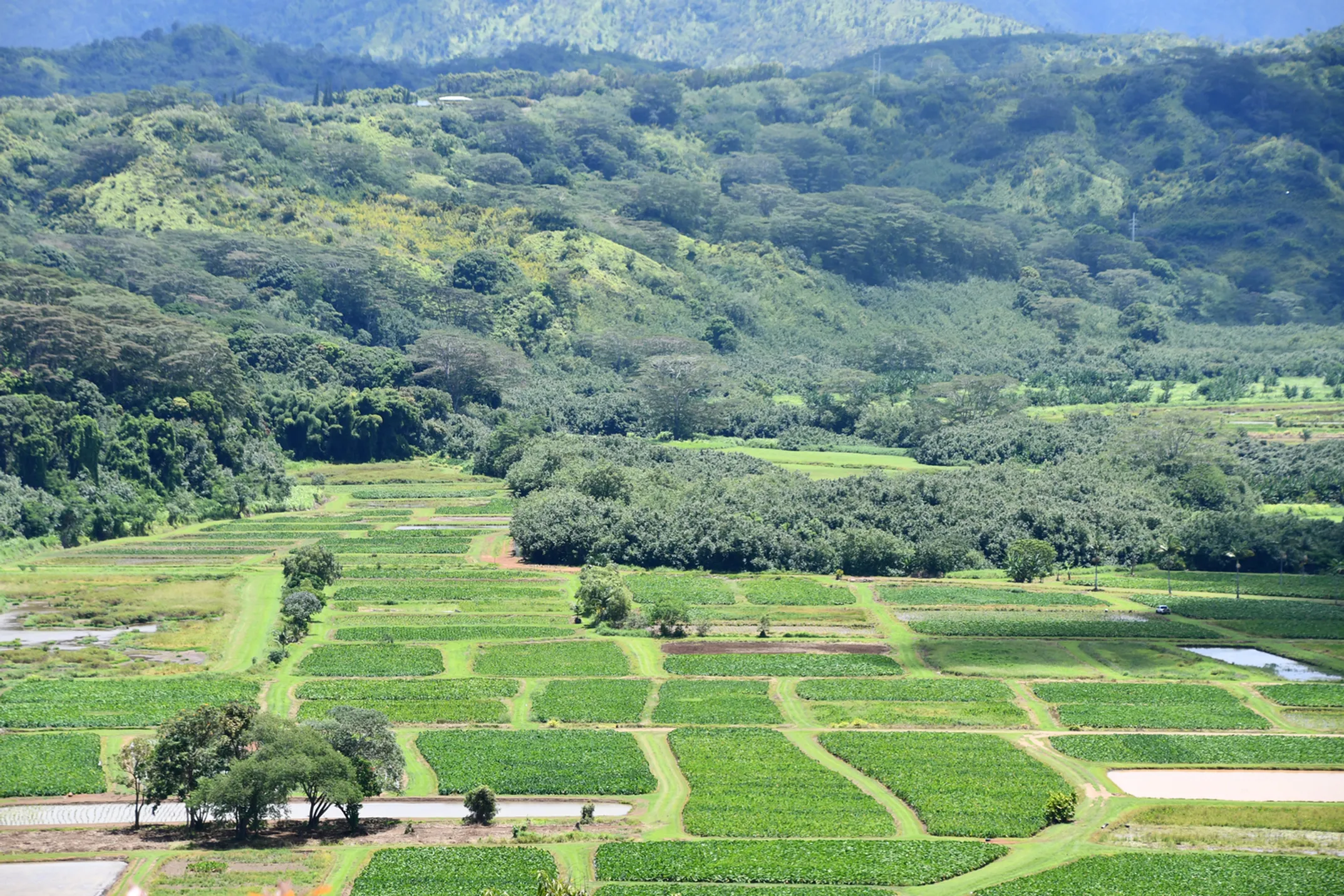
“Brew Your Best Cup”- Coffee Brewing Workshop
Heavenly Hawaiian Coffee Farm • Farm • Holualoa, Island of Hawaii • Hawaii

The epic story of how Hawaiʻi grew - from ancient sustainable agriculture to modern farm-to-table revolution

Written by a Local Expert
Jade KawanuiTo understand the flavor of a fresh Waialua chocolate bar or a cup of 100% Kona coffee, you have to understand the story of the land it came from. The history of agriculture in Hawaiʻi is as dramatic and layered as our volcanic mountain ranges. It's a story of incredible ingenuity, of immense change, and of a powerful movement to return to the roots of what has always sustained these islands.
This history isn't just in the past. It's a living narrative you can see and taste today. Every farm tour you take, every bite of locally grown food you taste, connects you to this epic story that spans over a thousand years.
This history isn't just in the past. It's a living narrative you can see and taste today. Every farm tour connects you to an epic story spanning over a thousand years.

Long before the first ships from the West appeared on the horizon, the Hawaiian Islands were a masterpiece of sustainability, supporting a massive population through sheer ingenuity and a profound understanding of the environment. This wasn't just farming. It was a holistic system of living in balance with the natural world.
The foundation of this society was the ahupuaʻa, a revolutionary system of land management that is a global model of sustainability even today. Imagine the island divided into wedges of a pie, each slice running from the forested peaks of the mountains (mauka) down to the coral reefs of the sea (makai). This structure was brilliant because it gave each community access to every resource it needed to thrive: fresh water and timber from the uplands, fertile plains for farming, and the bounty of the ocean.
The first Polynesian voyagers brought ʻulu (breadfruit), niu (coconut), kō (sugarcane), and most importantly, kalo (taro) - over 300 varieties developed through careful cultivation.
Vast systems of irrigated terraces that transformed valleys into productive landscapes, engineering marvels still visible today in places like Hanalei Valley.
Hundreds of fishponds along coastlines - advanced aquaculture that cultivated fish like ʻamaʻama (mullet), producing hundreds of pounds per acre annually.
For Hawaiians, kalo was a sacred ancestor. According to creation stories, kalo grew from Hāloanakalaukapalili, linking people genealogically to the plant that sustains them.
The arrival of Captain James Cook in 1778 marked the beginning of a seismic shift in Hawaiian agriculture and society. The introduction of a market economy, foreign diseases that tragically decimated the Native Hawaiian population, and new concepts of land ownership set the stage for a new agricultural king: sugar.
A series of events accelerated this transformation. The Great Māhele of 1848 dismantled the traditional communal land system, allowing for the private ownership of land by foreigners for the first time. This, combined with the California Gold Rush creating new demand and the Reciprocity Treaty of 1875 eliminating tariffs on Hawaiian sugar exported to the U.S., ignited a boom.
The plantation era fundamentally reshaped the islands' demographics. Contract laborers from China, Japan, Portugal, the Philippines, Puerto Rico, and Korea created the multicultural "local" culture that defines Hawaiʻi today.
The plantations' insatiable need for labor, which the diminished Native Hawaiian population could not meet, fundamentally reshaped the islands' demographics. From these difficult circumstances, something beautiful and uniquely Hawaiian was born. In the plantation camps, diverse cultures mixed, sharing food, language, and traditions.
This cultural fusion is the origin of Hawaiʻi's modern "local" culture and cuisine. The plate lunch, with its scoops of rice and mac salad alongside Japanese teriyaki, Filipino adobo, or Korean kalbi, is a direct descendant of the plantation meal. The beloved Spam musubi and the sweet, doughy malasada are all part of this rich, multicultural culinary heritage.
The 20th century saw the slow decline of "King Sugar" and the pineapple empire, as global competition and rising labor costs made the plantation model unsustainable. This decline, however, opened the door for a new agricultural revolution. Today, Hawaiʻi's agricultural landscape is a diverse tapestry of smaller farms growing a stunning variety of products.
World-famous Kona coffee, buttery macadamia nuts, rich cacao, fragrant vanilla, and a cornucopia of tropical fruits now define our agricultural output. The state has also become a critical hub for the global seed industry, thanks to a climate that allows for multiple growing cycles per year.
With 90% of food currently imported, organizations like Hawaii Farmers Union United champion a return to food self-sufficiency and sustainability.
Modern farming practices that enrich soil, increase biodiversity, and honor the wisdom of the ancient ahupuaʻa system.
A vibrant culinary scene where chefs, farmers, and consumers forge direct connections, celebrating locally grown ingredients.
When you visit a farm, shop at a farmers market, or dine at a farm-to-table restaurant in Hawaiʻi today, you're not just having a meal.
You are participating in this exciting story—a story of resilience, innovation, and a deep, enduring love for the land.
Get insights into Hawaiian agricultural heritage and modern farm tours.
This epic agricultural history isn't just something to read about—it's something you can experience firsthand on farms across the Hawaiian Islands. From ancient taro fields that still operate using traditional methods to modern sustainable farms that blend innovation with respect for the land, the story of Hawaiian agriculture is alive and thriving.
Visit working taro farms in Hanalei Valley on Kauaʻi to see traditional loʻi kalo systems still in use, or explore the cultural significance of kalo at educational centers.
Tour historic plantation sites and learn about the diverse immigrant communities that shaped modern Hawaiian culture through food and farming traditions.
Visit cutting-edge sustainable farms that are leading the way toward food self-sufficiency while honoring traditional Hawaiian agricultural wisdom.
Dine at restaurants that source directly from local farms, tasting the culmination of thousands of years of agricultural innovation in every bite.
Every farm you visit tells part of this larger story.
From the sacred kalo fields of Kauaʻi to the innovative coffee farms of the Big Island, you're not just touring—you're connecting with a living, breathing agricultural heritage that continues to evolve and inspire.

Heavenly Hawaiian Coffee Farm • Farm • Holualoa, Island of Hawaii • Hawaii

